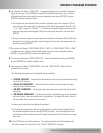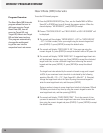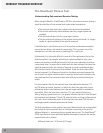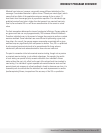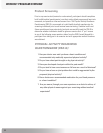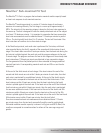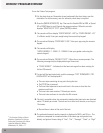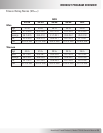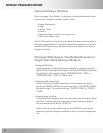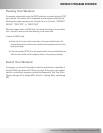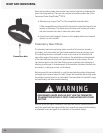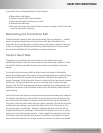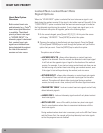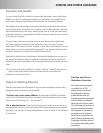
34
WORKOUT PROGRAM OVERVIEW
To use the Fitness Test program:
1. Put the chest strap on. Remember to wet underneath the chest strap, over the
electrodes. For test accuracy, use of a telemetry chest strap is required.
2. Press the [MORE WORKOUTS] key. Then use the Treadle MAX or MIN, or Speed
UP or DOWN keys to scroll through the program options. When the console
displays “NAUTILUS FIT TEST”, press [ENTER] to select.
3. The console will then display “ENTER WEIGHT - LBS” (or “ENTER WEIGHT - KG”
if in Metric mode). Enter your weight using the numeric key keypad.
4. The console will display “ENTER AGE 10 -99.” Enter your age using the numeric
keypad.
5. The console will display
“ENTER GENDER / 1 - MALE / 2 - FEMALE. Enter your gender code using the
numeric keypad.
6. The console will display “BEGIN FIT TEST”. Follow the on screen prompts. The
following message may be displayed during a fitness test:
• “CHECK HR BELT” - Indicates that the heart rate signal has been missing for
the last 30 seconds.
7. The test will be terminated early, and the messages “TEST TERMINATED / TRY
AGAIN LATER” will be displayed if:
• The user stops exercising at any point during the test.
• The [STOP] key is pressed.
• The heart rate response to each work level is the same or less than the
previous work level.
• The heart rate never reaches 115 beats per minute.
• The heart rate continues to rise after the fifth minute.
8. The test is complete when two consecutive steady-state heart rates are obtained
above 115 beats per minute. The test can be as short as 6 minutes, or as long as
15 minutes.
• No cool down is done at the end of the test.
9. The estimated maximal aerobic capacity is displayed in METs, and VO2max . The
results are compared to normative values of the same age and gender
1
(see
below), and given a fitness rating of “Low”, “Fair”, “Average”, “Good”, or “High.”
1
The American College of Sports
Medicine, Guidelines for Exercise
Testing and Prescription, 6th Edition,
Lippincott WIlliams & WIlkins,
Philadelphia, PA, 2000, p. 77.




